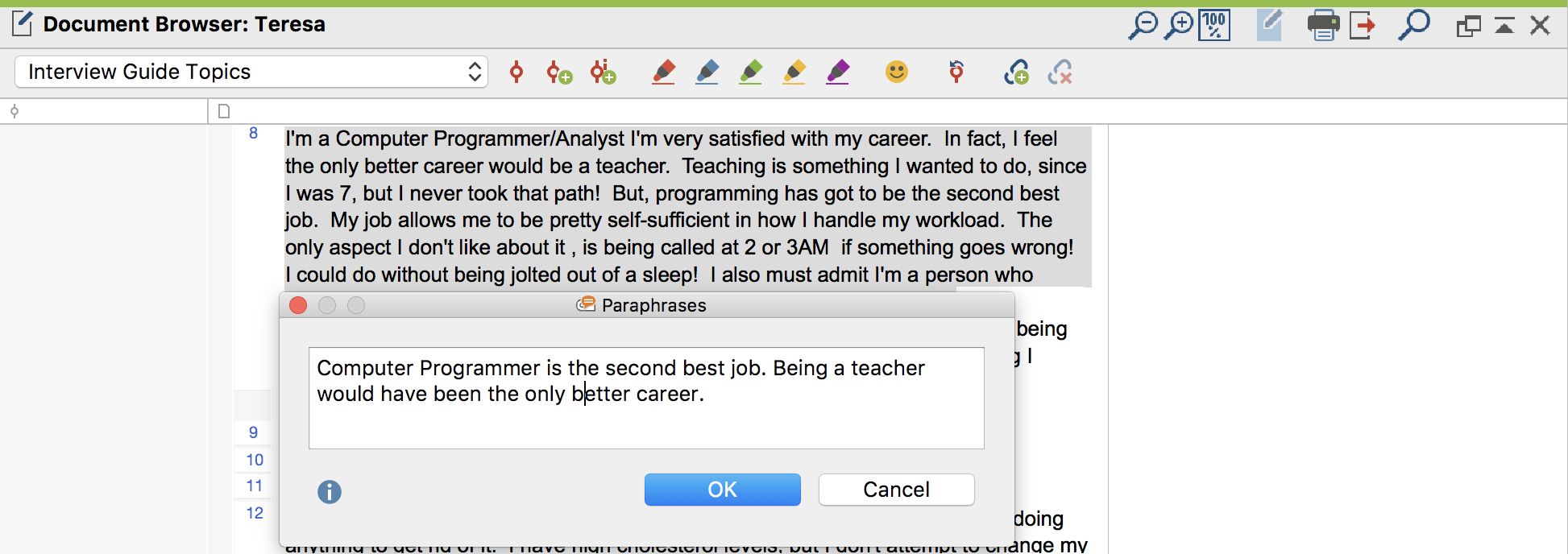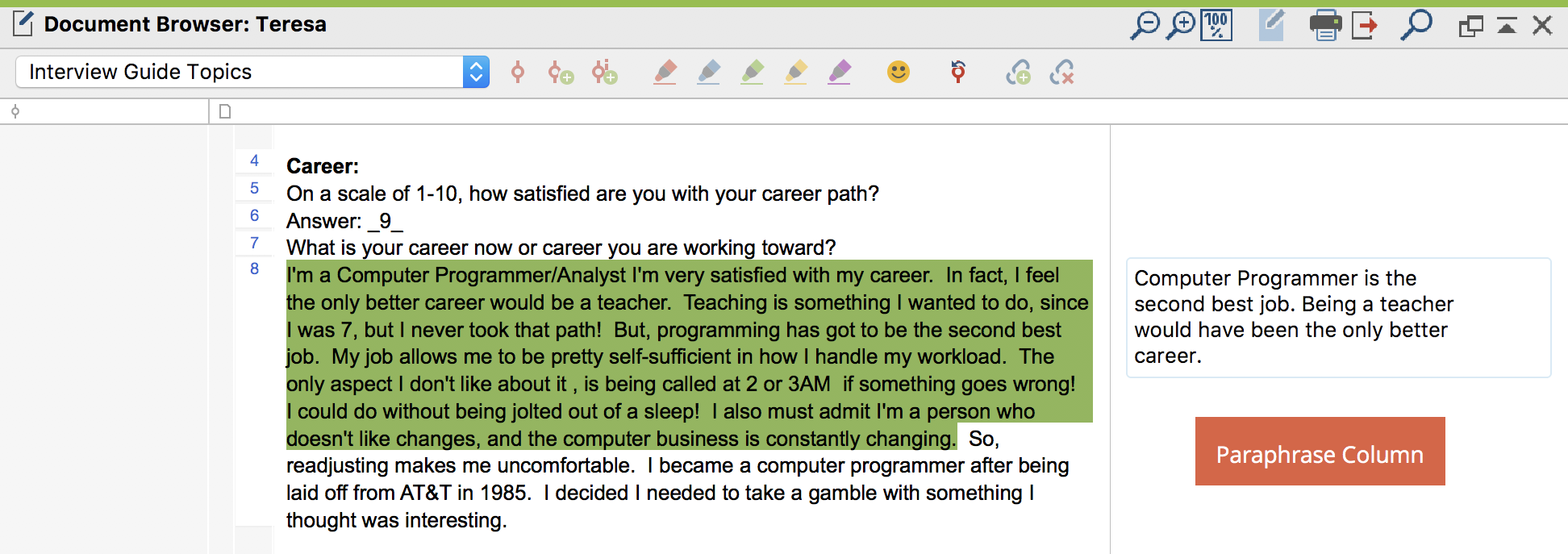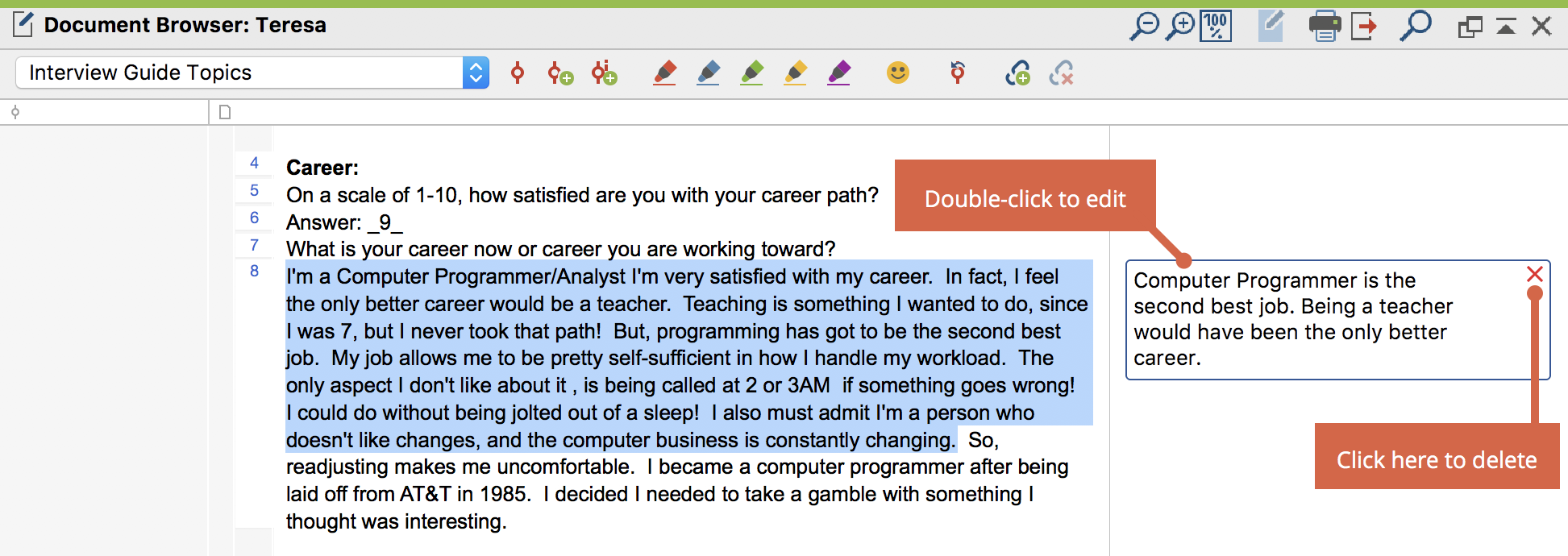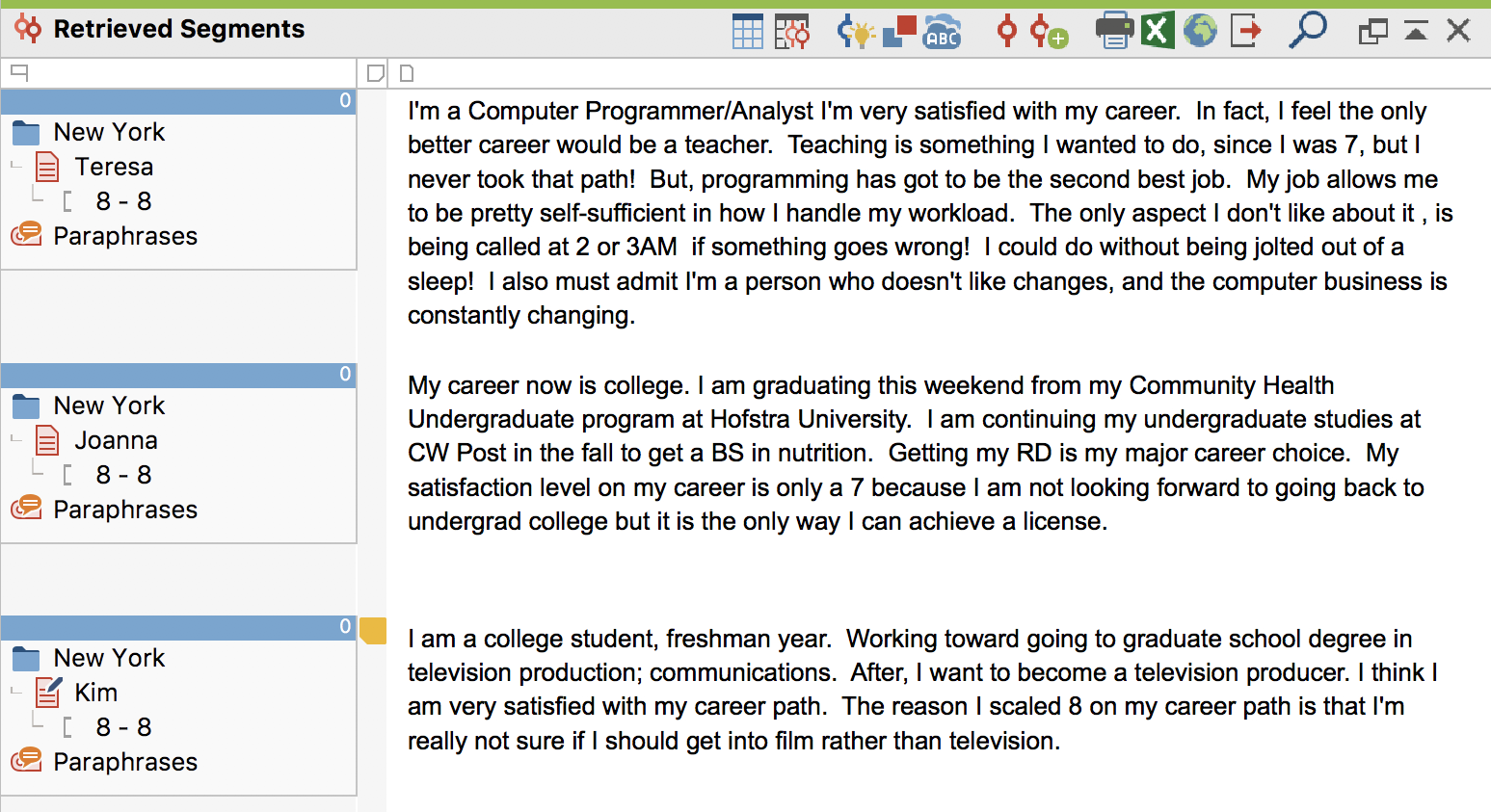Paraphrases are summaries of individual sections of your data, written in your own words. MAXQDA makes it easy to write paraphrases for sections of text and then categorize these paraphrases in order to systematize and group them. These paraphrase functions can be used, among other things, to work systematically with summaries of text sections and the formation of categories. Paraphrasing is often carried out within the framework of qualitative content analysis: it is used especially in the interpretation of data material and as the basis for inductive classification (Kuckartz, 2016, Mayring, 2015, Schreier, 2012). But paraphrasing is useful in general whenever you need only to summarize the important contents of a text, e.g. when a journalist paraphrases the key statements of an interview.
Writing new paraphrases in Paraphrase Mode
Paraphrases can be created for both text and PDF documents:
- Open a text or PDF document.
- Activate the Paraphrase Mode by going to the Analysis tab and clicking on the Paraphrases function. The icon will then be highlighted in grey, which indicates that Paraphrase Mode is on.

- Highlight with the mouse the section of the document you would like to paraphrase.
- Immediately after you let go with your mouse, MAXQDA will display a window in which you can write a paraphrase. A paraphrase has a maximum of 255 characters including spaces.

- Pressing the Enter Key (↩) or clicking on OK closes this window.
The newly-created paraphrase text is then displayed to the right of the text in the Paraphrase Column. The paraphrased text is stored in a green color as standard, so you can immediately see which text sections have already been paraphrased.

More paraphrases can be created in the manner described above. However, new paraphrases cannot overlap with existing ones. So, when you draw a marker in a green-colored text section, no window will appear to enter another paraphrase.
Editing or deleting paraphrases
To edit a paraphrase, double-click the paraphrase text in the "Paraphrase Column" next to the text. The window with the paraphrase opens again in which it can be edited.
To delete a paraphrase, click on the red cross in the top right corner of the paraphrase text.

Deactivating Paraphrase Mode
Paraphrase Mode is deactivated in the same way it is opened by clicking on the Paraphrase button in the Analysis tab. The paraphrase column next to the text then also disappears.
"Paraphrase Mode" is automatically deactivated when you open another document or select another tab in the menu.
Displaying the paraphrase column in the “Document Browser”
The paraphrase column next to the text can also be displayed independently of Paraphrase Mode when you want to display your paraphrases at any time. Right-click in a text or PDF document and select Display paraphrase column. You can also use the same action to hide the column later.
The "Paraphrase" code in your "Code System"
The process of paraphrasing is independent of coding, that is, the process does not require any previous coding of your data, nor will it create new code. However, the code "Paraphrases" will appear in the code system, which stores all paraphrases in your MAXQDA project. This allows you to use the complete functionality for codes and coded segments for your paraphrase code. For example, all your paraphrased texts in a document can be compiled in your "Retrieved Segments" window:
- Activate a document that includes paraphrases in your “Document System“.
- Activate the "Paraphrases" code in your "Code System".

The "Paraphrase" code in your "Code System" has some special features:
- You can’t delete it, rename it or use it for coding.
- Coded segments cannot be added to or copied from it.
- No coding stripe will appear in the document browser for this code.
- The code is ignored in the case of teamwork imports.
- The code is ignored in the Document Portrait.
- The code is displayed in the Codeline.
Paraphrasing and teamwork
If you’re working in a team and have split the documents to be paraphrased between your team members, you can use the Merge projects function (in the "Home" tab) to merge the projects of each individual team member into a single project.
You can find further details about working in teams here.
